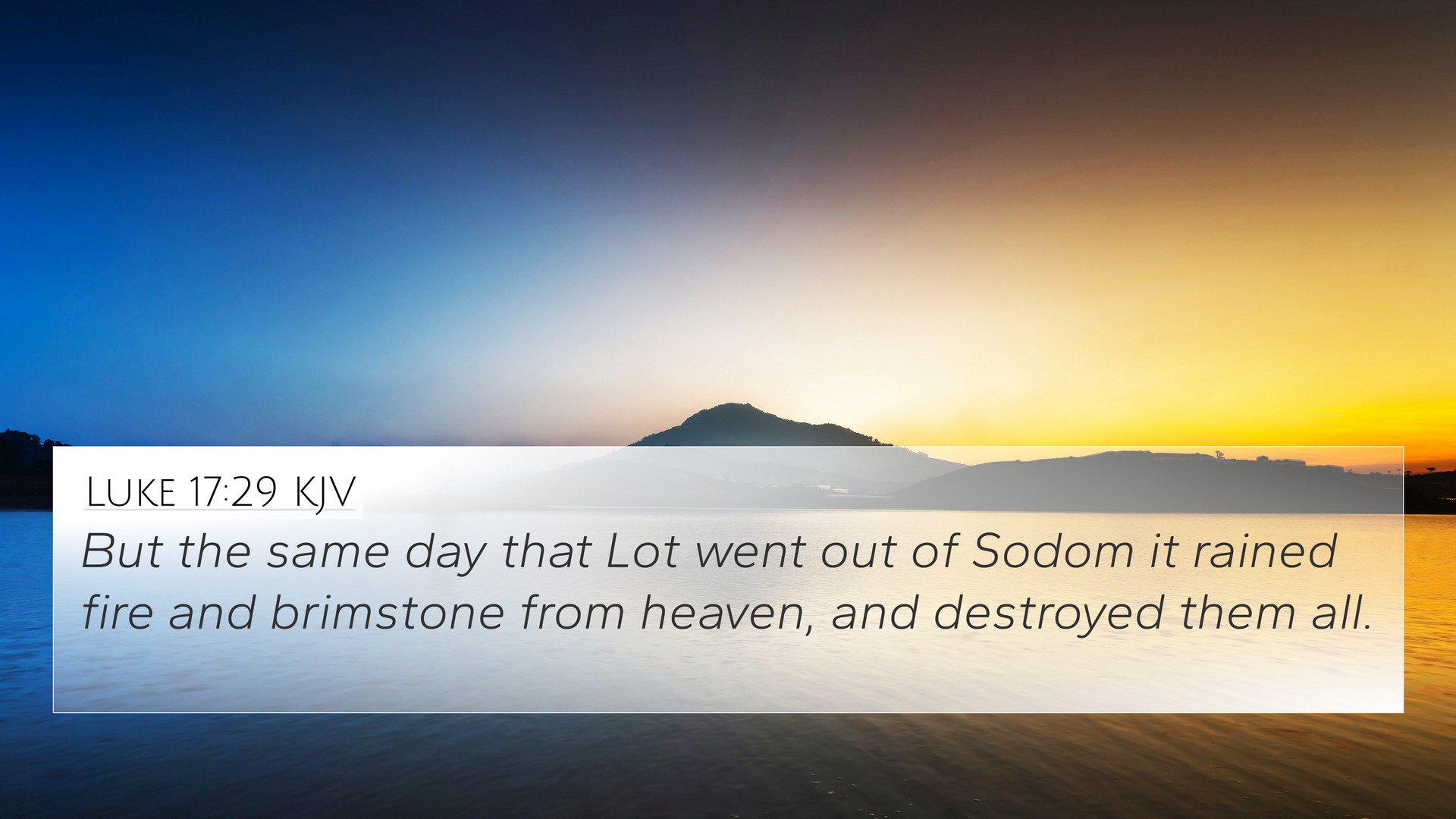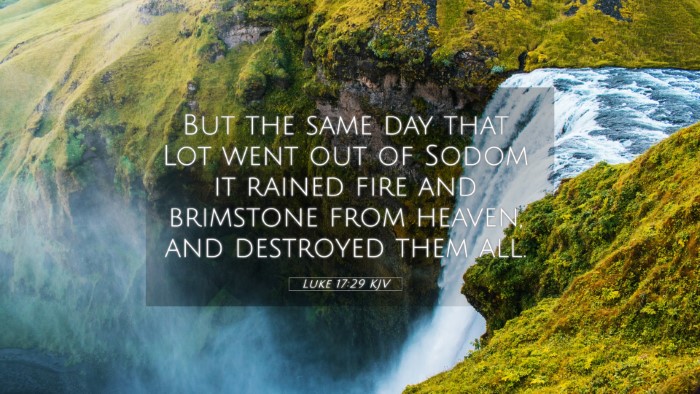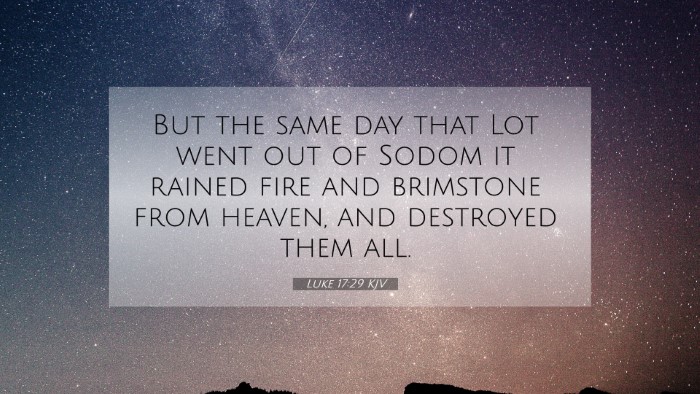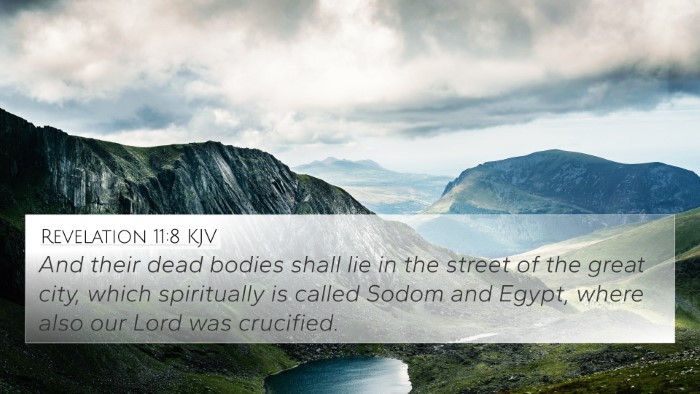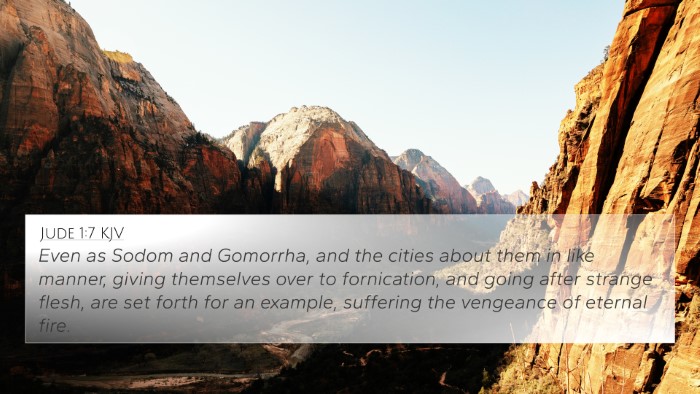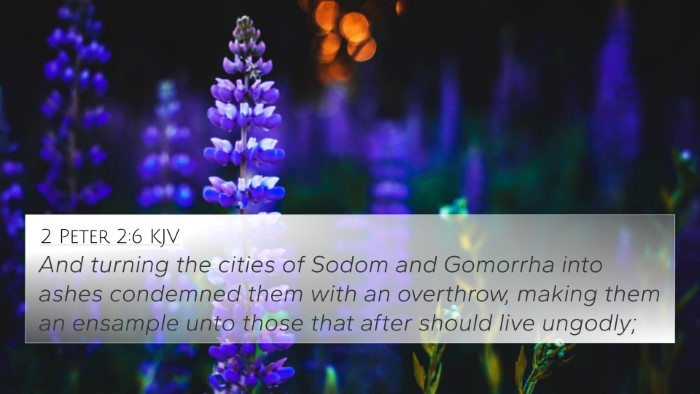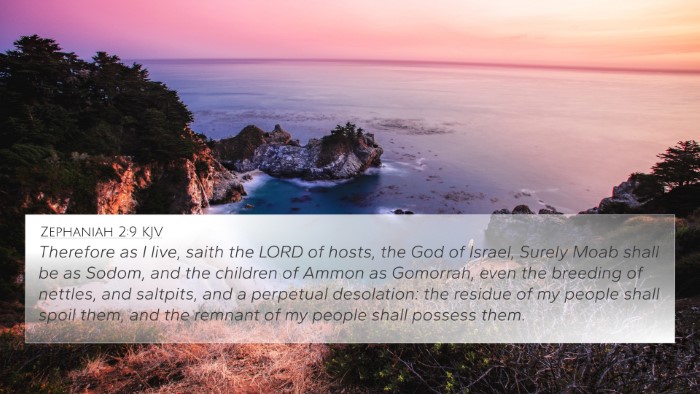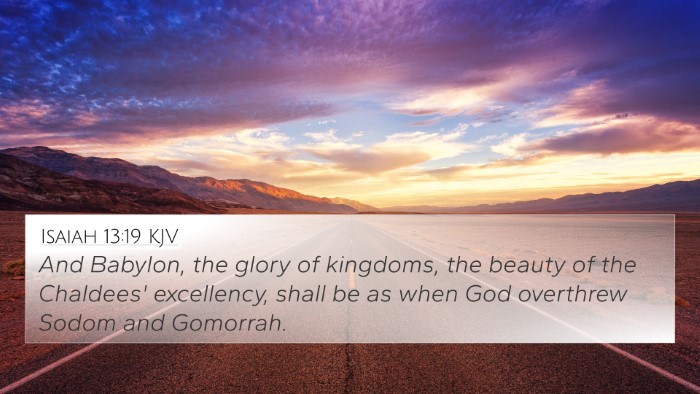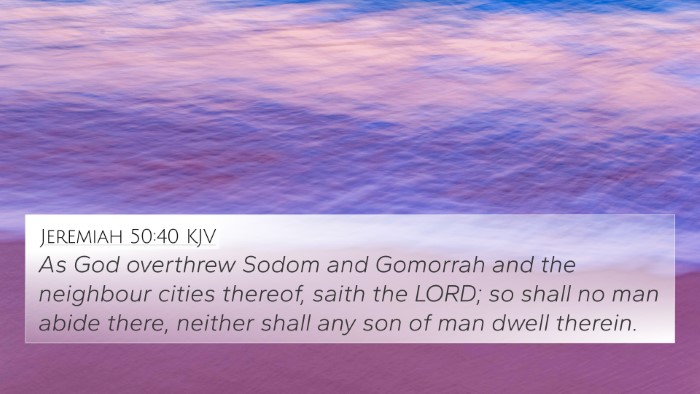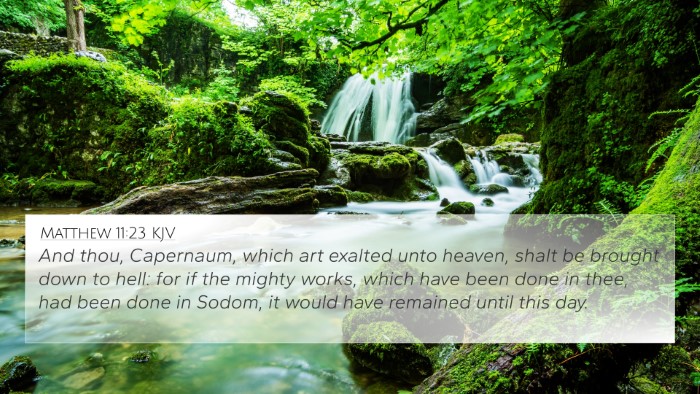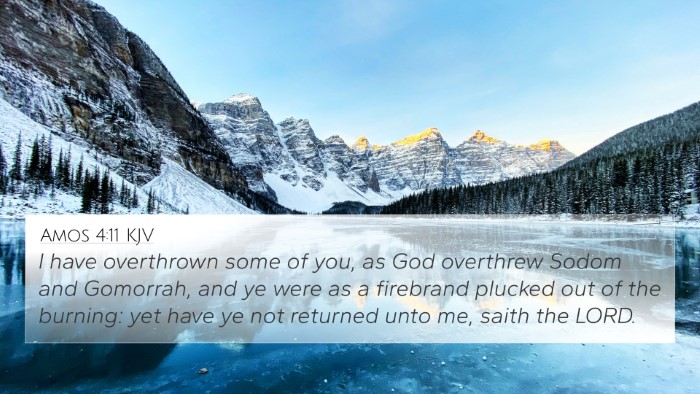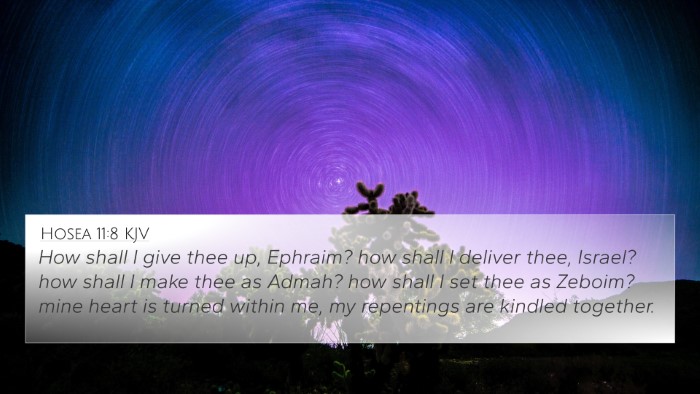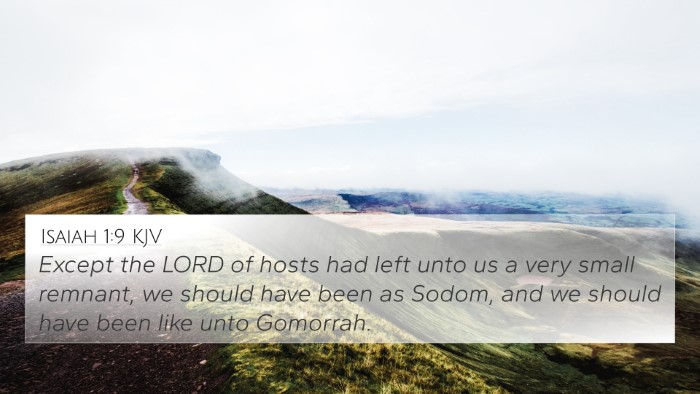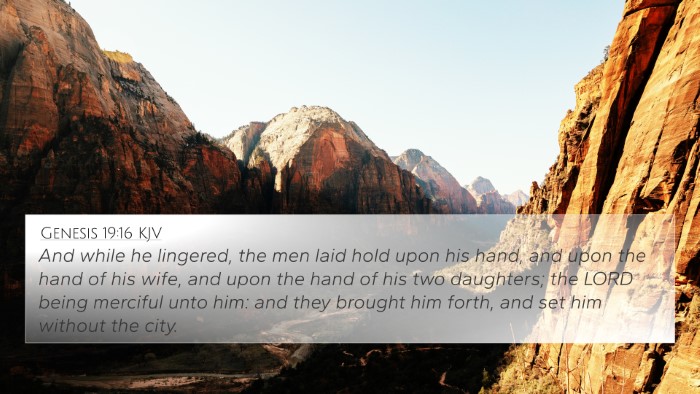Understanding Luke 17:29
Verse: Luke 17:29 states, "But the same day that Lot went out of Sodom it rained fire and brimstone from heaven, and destroyed them all." This poignant verse serves as a reflective call toward divine judgment and mercy.
Exegesis and Meaning
The verse illustrates God's immediate judgment upon Sodom and Gomorrah, which serves as a metaphor for ultimate divine retribution. The day Lot escaped symbolizes a moment of deliverance amidst destruction.
Public Domain Commentary Insights
-
Matthew Henry:
Henry emphasizes the urgency of Lot's escape, illustrating it as a profound defense of divine mercy in a world marred by sin. The destruction that followed underscores the stark reality of judgment for the impenitent.
-
Albert Barnes:
Barnes highlights the historical event as a lesson against complacency in sinners. He notes the parallel between the destruction of Sodom and the impending fate awaiting those who reject divine warning.
-
Adam Clarke:
Clarke points out the significance of timing in Lot's deliverance as a divine orchestrated act, positioning the escape as part of God's redemptive plan amidst wrath, reinforcing the theme of salvation and judgment.
Theological Themes
The themes present in Luke 17:29 resonate throughout scripture—a narrative built upon the dualities of judgment and mercy, which propel the larger biblical discourse regarding human sinfulness and divine intervention.
Cross-References
This verse connects to multiple biblical passages that reaffirm its thematic significance in understanding divine judgment:
- Genesis 19:24-25: Documenting the destruction of Sodom and Gomorrah directly.
- Matthew 10:15: A warning of the judgment that can also befall towns that reject the gospel.
- Luke 17:26-27: Parallels Lot’s experience with the days of Noah, enhancing the lesson about divine wrath.
- Revelation 18:2: The condemnation of Babylon also echoes the fate of Sodom.
- 2 Peter 2:6: Ties the fate of Sodom to lessons about ungodly living and the ultimate judgment awaiting the wicked.
- Romans 1:18: Discusses the wrath of God against mankind's unrighteousness.
- Matthew 24:38-39: Comparison to the ignorance of people before the judgment in the days of Noah.
Thematic Connections and Cross-Referencing
Understanding Luke 17:29 requires awareness of the comprehensive biblical narrative and interconnections between different books. Tools for Bible cross-referencing highlight the continuity and thematic resonance found within the scripture.
- Bible Concordance: A useful resource for tracing the themes of judgment and mercy throughout the Bible.
- Bible Cross-Reference Guide: Helps in linking similar themes and events across different scriptures for deeper analysis.
- Cross-Reference Bible Study: An educational method to explore the interconnectedness of biblical stories and lessons.
- Comprehensive Bible Cross-Reference Materials: These aid in expounding the breadth of biblical theology regarding judgment.
Methods for Cross-Referencing
To grasp the full implications of biblical connections, consider employing a variety of cross-referencing Bible study methods:
- Examine direct parallels, as seen between Luke 17:29 and Genesis 19:24-25.
- Identify thematic elements shared across texts, like divine judgment seen in both Sodom's fate and the lessons from the prophetic writings.
- Utilize digital or physical concordances to locate related verses and texts based on keywords.
User Intent and Cross-References
Individuals may seek understanding by asking questions such as:
- What verses relate to Luke 17:29?
- How does Luke 17:29 connect to the story of Noah?
- What themes of divine judgment are echoed throughout the Bible?
Conclusion
In conclusion, Luke 17:29 serves as a profound reminder of the consequences of moral choices and the reality of divine retribution intertwined with mercy. By engaging deeply with this verse and cross-referencing it with connected scriptures, believers can cultivate a more nuanced and comprehensive understanding of biblical teaching regarding judgment and salvation.
